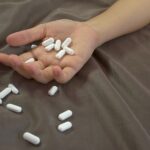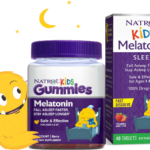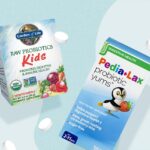What Drugs Can Kill A Child In A single Dose?

Accidental overdoses send more than 60,000 kids to the emergency room each year, some of them never make it out. Those risks may increase during the holidays when visitors leave coats, purses, or suitcases with medications where young children can reach them.
Parents may not be aware of the danger posed by leaving medications where young children can reach them. “In recent years, the number of accidental overdoses in young children has increased by 20%,” Dan Budnitz, MD, MPH, director of the CDC’s Medication Safety Program, says in a news release.
Each year, one in every 150 2-year-olds is treated in an emergency room for an unintentional drug overdose, usually after finding and eating or drinking medications without adult supervision.
What drugs can kill a child in a single dose?
Almost any medicine can cause harm if your child takes too much of it, some don’t require higher doses to wreck havoc. We have compiled a list of medication that are considered very dangerous because they can kill a child in a single dose.
The list of drugs that can kill a child in a single dose are:
- Diabetes Drugs. Around half a billion people worldwide have diabetes, this make diabetes medication a common drug in many households. Unfortunately, keeping some types of diabetes medication especially Sulfonylureas (Glyburide, Glipizide) around children can lead to tragedies.
When accidently consumed by children, this drugs can cause low blood sugar, coma and seizures. Children may not display signs of this until one to six hours later, but symptoms may last for 24 hours, so these children are often hospitalized early, for observation.
- Camphor-containing rubs. Camphor is a very common product in over-the-counter products. It also has a very distinct odor and taste, which may make it seem like the last thing a kid would try to eat. But those who have kids know that anything and everything goes in their mouths. Yearly, there are around 8,000 cases of camphor ingestion in children younger than 6 years old.
Camphor is especially dangerous because ingesting it works so quickly; symptoms occur within 10-20 minutes, and often children can go into seizures without any warning. Shortly after ingesting, children may become hyperactive and restless. The skin around their lips may become blue. These symptoms can progress to seizures and eventually, to coma and respiratory depression and arrest. Unfortunately, the amount that it takes to send a child into this downward spiral is very small; toddlers have been known to have seizures within 10 minutes after eating only one to two teaspoonful and even one teaspoon can be lethal.
- Cardiac Meds (Calcium channel blockers). Calcium channel blockers are among the most prescribed medication for hypertension. They work by slowing the movement of calcium into the cells of the heart and blood vessel walls. They are a common sight in many homes which makes them an easy picking for children as they play.
Symptoms in children who ingest these medications usually show up one to five hours after they take the pill, but in the extended release pills, they may be delayed up to 14 hours — a fact that may make it even more difficult for you to figure out why the child is not feeling well. Once the BP and HR drop, it will lead to death. It is very difficult to counter the effects once the downward spiral has started.
- Opioid Pain Medications. Narcotics are also called opioid pain relievers are only used for pain that is severe and is not helped by other types of painkillers. When used carefully and under a health care provider’s direct care, these drugs can be effective at reducing pain. Examples include: Oxycodone (OxyContin, Roxicodone and Percocet), Hydrocodone (Vicodin, Norco). However, Opioid pain medications can be an overdose nightmare, 50 percent of toddlers who took two 5 mg tablets became rapidly ill within an hour. For an infant, even half of a tablet of hydrocodone can be lethal.
- Aspirin and Oil of Wintergreen. The active ingredient in wintergreen oil, methyl salicylate, is closely related to aspirin and has analgesic and anti-inflammatory properties. As such, products containing wintergreen oil are often used as an anti-inflammatory and topical pain reliever. Oil of wintergreen is very hazardous because its yummy smell tempts toddlers to ingest it, but one teaspoon of oil of wintergreen is the equivalent of almost 90 baby aspirins. This will kill a child.
- Depression Drugs. Antidepressants are medications that can help relieve symptoms of depression, social anxiety disorder, anxiety disorders, seasonal affective disorder, and dysthymia, or mild chronic depression, as well as other conditions. However, some antidepressants have been linked to child fatality especially accidental death. These medications include: Amitriptyline, imipramine, buproprion (Elavil, Tofranil, Wellbutrin, Zyban). This is because they cause seizures, unresponsiveness and heart arrhythmias. Symptoms can be delayed for up to six hours, after which children can develop anything from seizures to coma and arrhythmias.
- Topical Blood Pressure Patches, Eye Drops, and Nasal Sprays. Drugs such as Afrin, Clear Eyes, Clonidine patch can be particularly risky around children. Children have been known to drink these sprays and eye drops, and they will even lick discarded medication patches. Symptoms from these ingestions can be delayed for four hours, but as little as 6 ml can lead to lethargy or coma, leading to death.





